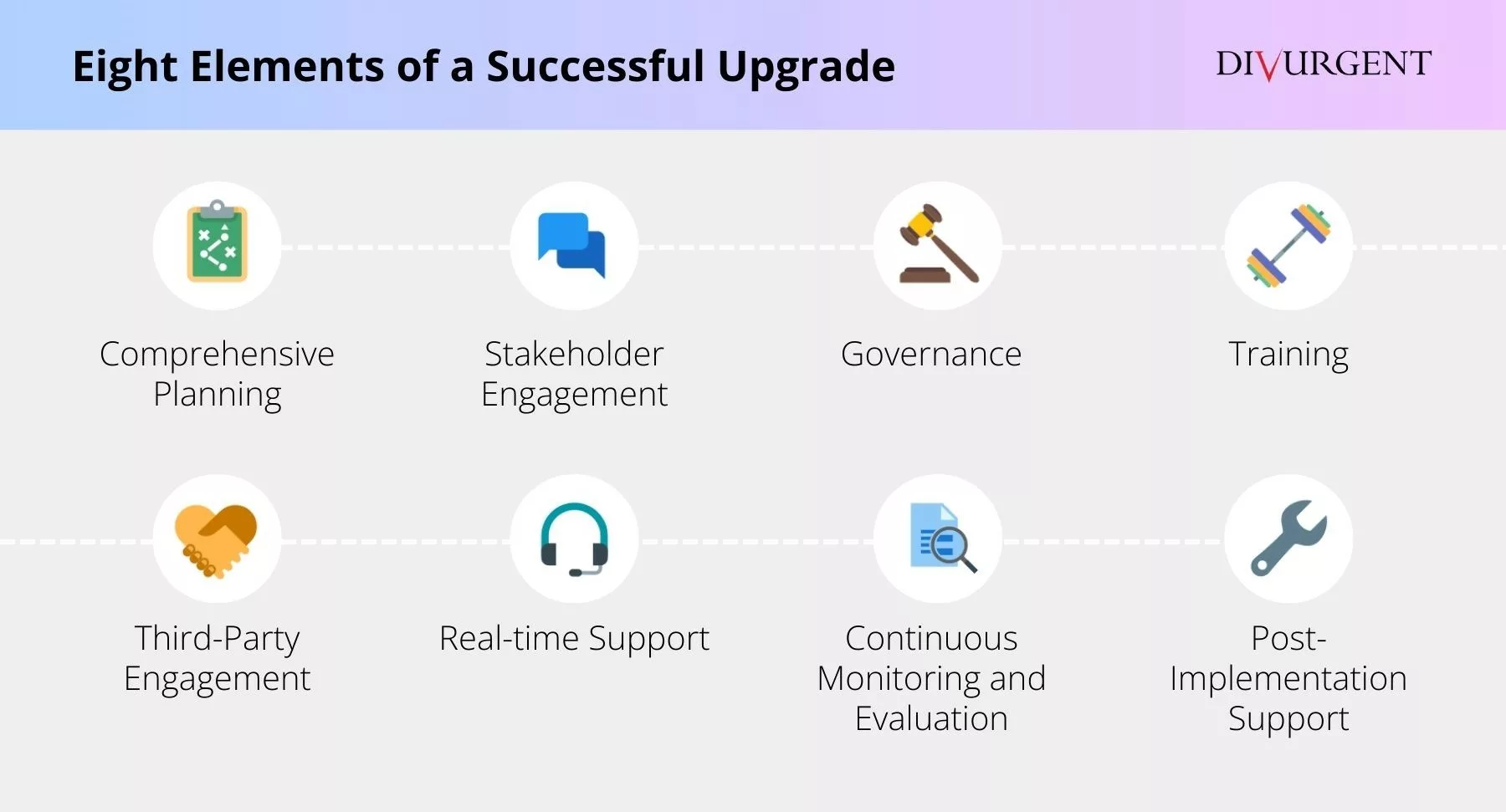Imagine: it’s Friday afternoon, and you settle into your patio chair at home for a well-deserved break after spending the last year or so implementing your organization’s new EHR. You smile as you think about all you and the team accomplished. Just this past week, you were able to shut down the command center. Providers are placing orders, results are being routed, patients are flocking to the new online portal, and claims are even going out the door! Finally, things can get back to normal, or as normal as they ever are in healthcare.
One last check of e-mail on your phone and then you can begin to make up some of the time you missed with your family. One e-mail from your EHR vendor catches your eye. The subject is “Quarterly Upgrade.” Then it hits you: There’s an upgrade you will need to do in the next few months to meet some new regulatory requirements, as well as install some of the features you couldn’t quite fit into your initial implementation. Plans for family time begin to dissolve in your mind.
All of the work your team has done to get live starts coming back to you. Build, testing, and training all rise to the top of mind. There goes the post-live calm you hoped for. But don’t worry—there’s help.
“Then it hits you: There’s an upgrade you will need to do in the next few months.”
What’s in an Upgrade?
Upgrading EHR systems is a crucial component of lifecycle management. Upgrades help healthcare providers comply with regulatory requirements and standards by providing the content you need for submissions and reporting. Additionally, upgrades are now the critical path to “staying current,” where you can install the latest and greatest features that improve patient care, support end users’ efficiency, and harness the power of AI.
However, upgrading EHR systems also presents significant challenges. One of the primary challenges is the high cost associated with the upgrade process, including documentation review, build, testing, training, the cost of taking the system down, and more. Furthermore, the post-upgrade period can be challenging from a change management perspective. Users have just gotten comfortable with the new system — now it’s going down and coming back up with new functionality and potentially a different look and feel.

Eight Elements of a Successful Upgrade
The most successful organizations have developed strategies around eight elements that drive upgrade success.
- Comprehensive Planning: Determine the organizational upgrade strategy. Whether you want to stay current or a release behind, it’s important to assess the impact of these decisions. Develop a detailed project plan that includes timelines, milestones, and resource allocation. This helps in anticipating potential issues and addressing them proactively.
- Stakeholder Engagement: Involve all stakeholders, including clinicians and support staff, in the planning and implementation process. This includes feature selection to user acceptance testing. Consider each upgrade a “mini go live.”
- Governance. Look to transition your implementation governance model into an ongoing governance model to support optimization, upgrades, and ongoing decision making.
- Training: Leverage standard training and communication paths that were developed during your implementation for training and change management. Maintaining regular upgrades can lessen the impact of large changes and reduce the need for significant training. Classroom time is precious and pricey. Use it wisely.
- Third-Party Engagement: Work closely with your critical third-party vendors to ensure compatibility with your new EHR version. At minimum, complete integrated testing for core cross-system workflows, and ask the vendor if they have any experiences or known issues with your target EHR version.
- Real-time Support. Consider at-the-elbow support, particularly for your first few upgrades, bundled upgrade versions, or when you’re rolling out hallmark new features that could present adoption challenges. Similarly, consider an “express lane” through the Support Desk call tree so upgrade-related issues are quickly triaged, prioritized, and addressed.
- Continuous Monitoring and Evaluation: Implement continuous monitoring and evaluation mechanisms to track the progress of the upgrade and identify any issues early on. This allows for timely interventions and adjustments.
- Post-Implementation Support: Provide ongoing support and resources after the upgrade is complete. This includes having a dedicated support team to address any issues that arise and providing additional training as needed.
At Divurgent, we are EHR experts with over 17 years of experience and more than 700 EHR implementations, upgrades, and go lives under our belts. Connect with us to talk about more best practices to get the maximum value from your EHR and other technology investments.
Maximize Your EHR’s Value
Discover Divurgent’s full range of EHR services – from go live to upgrade and beyond.

About the Author

Pete Wiley | Principal
Pete Wiley is Principal at Divurgent. He focuses on EMR implementations, optimizations, and leadership in healthcare. He is an expert in digital transformation and healthcare program management. Pete is a Certified Patient Experience Professional (CPXP) and recently worked at a large academic health system. Visit Pete on LinkedIn.


